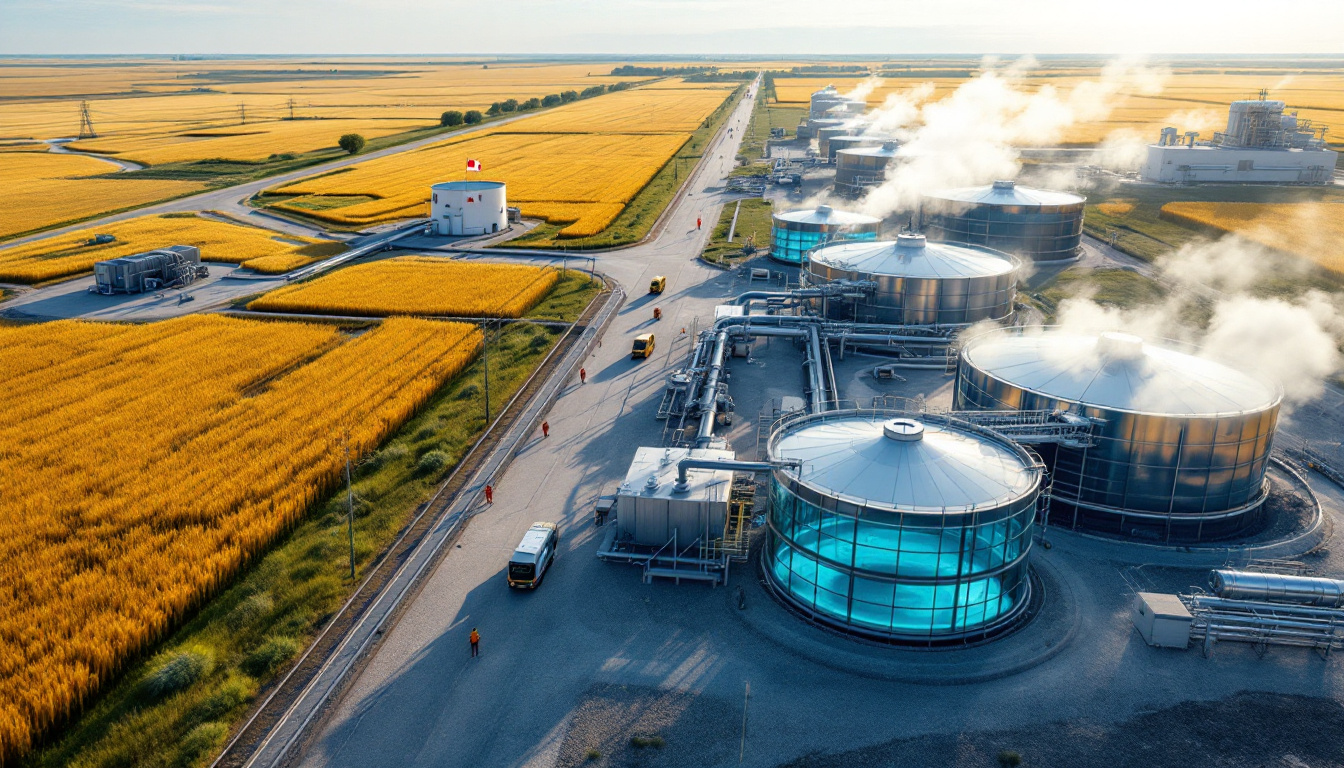Understanding Flotation Results in Copper Mining: The Mumbezhi Project Case Study
In the competitive world of copper mining, metallurgical performance can make or break a project's economics. Recent flotation test outcomes, combined with exceptional flotation results at Zambian copper project, have set a benchmark. In addition, advanced drilling programmes have uncovered promising mineral exploration insights, shedding light on resource potential.
What Are Flotation Tests and Why Do They Matter for Copper Projects?
Flotation testing is a crucial phase in evaluating any copper mining venture. These tests determine how effectively valuable minerals are separated from waste material. Furthermore, understanding this process influences decisions regarding capital allocation and operational planning. For instance, excellent flotation outcomes have recently been reported.
Flotation tests involve creating a slurry of finely ground ore mixed with water and specialised reagents. When air bubbles are introduced, hydrophobic copper minerals attach to these bubbles, forming a mineral-rich froth that is collected. In addition, the process leaves hydrophilic gangue minerals behind, forming the tailings.
The Science Behind Copper Flotation
Copper flotation is a physicochemical process that leverages differences in mineral surface properties. The method uses collectors, frothers, and modifiers to form a froth enriched in copper. Moreover, critical factors such as particle size distribution, reagent dosage, pH levels, pulp density, and residence time are decisive.
Key parameters affecting flotation performance include:
• Particle size distribution – Too coarse means incomplete liberation; too fine raises costs.
• Reagent selection and dosage – Targeting specific mineral surfaces is paramount.
• pH levels and pulp density – These influence chemical effectiveness and processing balance.
Economic Implications of Flotation Results
Efficient copper recovery underpins a project's economics. With exceptional recovery rates, revenue potential is enhanced, while improved concentrate grades lower transportation and treatment expenses. For example, a robust process can transform borderline deposits into profitable mines. This scenario is evident from flotation results at Zambian copper project, where productivity gains are clear.
Economic benefits include:
• Revenue potential – Recovery rates nearing 96.2% capture nearly full copper value.
• Capital expenditure optimisation – Coarse grind sizes reduce expensive equipment needs.
• Operational cost advantages – Lower energy consumption directly cuts opex.
• Enhanced project valuation – Reduced technical risk heightens investor appeal.
How Did the Mumbezhi Project Achieve Exceptional Flotation Results?
The Mumbezhi Project distinguishes itself via superior metallurgical performance. Its recovery rates and concentrate grades exceed typical industry benchmarks, making it a standout development. In addition, technical advances have contributed to these ultrafavourable outcomes.
Technical Analysis of the Nyungu Central Results
Metallurgical testing on sulphide materials from the Nyungu Central deposit has yielded notable figures. For instance, single cleaning stages delivered 96.2% copper recovery with a concentrate grading 24.6% copper, while two cleaning stages produced 90.1% recovery with 33.3% copper grades. These flotation results at Zambian copper project highlight the potential for economic transformation.
Key test outcomes include:
• Single cleaning stage: Achieving high recovery with substantial concentrate toxicity.
• Two cleaning stages: Yielding near-theoretical concentrate quality.
This performance not only exceeds the 85–90% typical range but also illustrates how a coarse grind size effectively liberates copper minerals.
Metallurgical Advantages of the Mumbezhi Mineralogy
Several mineralogical characteristics underpin the impressive flotation performance:
• Clean sulphide mineralogy – Minimal problematic elements reduce complications.
• Good mineral liberation – Copper easily detaches from waste rock.
• Minimal penalty elements – These ensure premium concentrate quality.
• Favourable mineral grain size – Enabling effective flotation with coarse crushing.
These advantages lead to processing improvements such as:
- Simplified flowsheet design
- Reduced required grinding
- Enhanced final concentrate grades
- Lower reagent consumption
What Makes the Mumbezhi Copper Project Strategically Significant?
Beyond metallurgical merits, strategic elements further enhance the project’s appeal. The Mumbezhi Project hosts a substantial copper resource and benefits from a prime location. In addition, its alignment with regional infrastructure developments boosts its long-term viability.
Resource Profile and Development Potential
The project hosts a large copper resource, including 107.2Mt at 0.5% copper. Notably, the Nyungu Central deposit provides both indicated and inferred resources. Furthermore, the Kabikupa deposit contributes additional inferred copper. This balanced resource mix is encouraging for initial mine planning and future expansion.
Future exploration efforts include:
• Upgrading inferred resources
• Testing deeper extensions
• Identifying satellite deposits
• Refining geological models for optimal mining
Strategic Location and Infrastructure Advantages
The Mumbezhi Project’s location is a strategic asset. It lies close to First Quantum Minerals’ operations and benefits from established mining networks. Moreover, access to processing facilities and smelter infrastructure facilitates smoother development. In addition, regional global copper supply dynamics further support its growth.
Advantages include:
- Standalone development possibilities
- Potential ore supply agreements
- Joint processing options
- Staged development approaches
How Has the Project Attracted Major Industry Investment?
The project’s impressive technical and economic merits have attracted notable investments. Investors recognise the role of robust metallurgy and strategic positioning. Furthermore, industry giants are increasingly aligning with projects that offer reduced risk and expedited development trajectories.
First Quantum Minerals' Strategic Partnership
First Quantum Minerals has made a substantial investment, acquiring a 15% stake for $15.2 million. The investment is poised to increase further, reflecting strong market confidence. This partnership also enables access to proven processing expertise and operational synergies. Additionally, coupling with quarterly production update data from First Quantum enhances transparency between partners.
Key benefits of the alliance include:
• Resource security – Securing future ore sources near existing operations.
• Operational synergies – Integration with nearby Sentinel mine operations.
• Processing optimisation – Leveraging expanded smelter capacity.
• Regional consolidation – Strengthening market presence in Zambia.
Other Key Investors and Financial Backing
Additional backing from Eagle Eye Holdings and others further validates the project. With $2.8 million committed by Eagle Eye Holdings, financial support paves the way for accelerated drilling and technical studies. These investments align with broader copper investment trends observed across the sector.
What’s Next for the Mumbezhi Copper Project?
With strong metallurgical outcomes and secured investment, the project moves into the next developmental stage. Ongoing testing, drilling, and updates to the resource model characterise the current focus. Moreover, continued high performance, as seen in flotation results at Zambian copper project, underpins further exploration.
Ongoing Testing and Development Timeline
Current activities involve:
• Metallurgical tests on transitional and fresh sulphide material
• A Phase 2 drilling programme that commenced in early May 2025
• Resource model updates and refined geological interpretation
These efforts are expected to extend into late Q2 2025, ensuring all parameters align with economic targets.
Pathway to Commercial Development
The roadmap to commercialisation comprises several milestones:
- Completing current metallurgical tests in Q2 2025
- Finalising Phase 2 drilling and resource updates
- Advancing a preliminary economic assessment
- Optimising the processing flowsheet
- Initiating pre-feasibility studies
- Engaging with regulatory authorities
The process is designed to weigh multiple processing scenarios, including:
• Conventional crushing, grinding, and flotation
• Staged development approaches with higher-grade resource prioritisation
• Leveraging shared infrastructure with existing operations
How Do These Results Compare to Other Copper Projects?
Benchmarking Mumbezhi against global peers reveals its technical superiority. While many projects achieve recoveries in the 80–90% range, Mumbezhi’s figures, including flotation results at Zambian copper project, place it in the top quartile.
| Project | Recovery | Concentrate Grade | Grinding Requirements |
|---|---|---|---|
| Mumbezhi (Nyungu) | 90.1–96.2% | 24.6–33.3% Cu | Coarser grind effective |
| Typical African Copper Belt | 85–92% | 20–28% Cu | Moderate to fine grinding |
| Global Average | 80–90% | 18–25% Cu | Variable grinding needs |
| High-Complexity Projects | 75–85% | 15–22% Cu | Fine grinding essential |
Furthermore, comparative data underscores that high-quality metallurgy reduces sensitivity to price fluctuations. Additionally, industry analysts refer to Chile copper gap when discussing supply constraints and competitive advantages.
What Are the Technical Challenges and Solutions?
Even with superior performance, every copper project faces technical challenges. Adapting to various ore types requires a flexible approach. In particular, handling transitional and oxide materials poses unique difficulties.
Processing Considerations for Different Ore Types
The Mumbezhi Project includes:
• Fresh sulphide material – Ideal for conventional flotation
• Transitional material – Undergoing tests for optimum recovery
• Oxide material – May lean towards leaching processes
Each ore type demands tailored approaches. For instance, comprehensive metallurgical tests help identify the best processing conditions. Consequently, blending strategies and sequential treatments optimise overall performance.
Optimising the Processing Flowsheet
A simplified processing flowsheet is achievable through:
• Coarser primary grinding – Reducing energy and equipment demands
• Streamlined flotation circuits – Fewer cleaning stages but high-grade output
• Efficient reagent usage – Lower chemical costs
• Cost-effective concentrate handling – Minimising dewatering and transport expenses
In addition, engineering studies are quantifying these benefits to further support project economics.
What Are the Investment Implications of These Results?
Flotation performance significantly influences the investment case. The robust technical data, particularly flotation results at Zambian copper project, enhances investor confidence and reduces perceived risks.
Key economic advantages include:
• Revenue enhancement – Nearly full copper extraction drives top-line growth.
• Premium concentrate quality – Attracting higher market prices.
• Capital cost savings – Reduced grinding and simplified processing lower CAPEX.
• Accelerated payback periods – Faster returns on initial investment.
Investors also appreciate the technical certainty provided by proven metallurgical processes. Consequently, market participants show heightened interest in this strategically positioned project.
What Does This Mean for Zambia's Copper Industry?
Mumbezhi’s success has significant regional implications. The project can potentially add between 30,000–50,000 tonnes of copper annually, which would boost national output by 3–5%. In addition, its development is likely to create hundreds of direct jobs and support extensive local supply chains.
Contribution to Zambia's Mining Sector
Mumbezhi aligns with government priorities:
• Expanding national copper production
• Attracting foreign investment
• Creating skilled employment
• Promoting sustainable mineral development
Moreover, the project sets the stage for broader regional development through infrastructure improvements, skills training, and community investment initiatives.
FAQ: Key Questions About the Mumbezhi Copper Project
What makes the flotation results at Mumbezhi significant?
The project achieved recovery rates between 90.1% and 96.2%, with concentrate grades ranging from 24.6% to 33.3% copper. These figures exceed typical benchmarks and are reinforced by flotation results at Zambian copper project, confirming the deposit’s favourable mineralogy.
How do the technical challenges shape project development?
Different ore types require specific approaches. Comprehensive metallurgical testing, alongside sequential processing options, ensures that technical challenges are managed effectively while maintaining both profitability and operational safety.
What long-term advantages does the project offer?
The project’s strategic location, robust resource profile, and favourable metallurgical performance provide compelling capital efficiency. In addition, a strong technical partnership with industry leaders further de-risks investment, paving the way for sustainable growth in Zambia’s competitive copper sector.
Want to Be Alerted to the Next Major Copper Discovery?
Discovery Alert's proprietary Discovery IQ model provides instant notifications of significant ASX mineral discoveries, helping you identify actionable copper opportunities before the broader market. Discover why major mineral finds can lead to substantial returns by exploring our dedicated discoveries page and position yourself for the next potential Mumbezhi-calibre project.




